Charger NiteCore Intellicharger D4
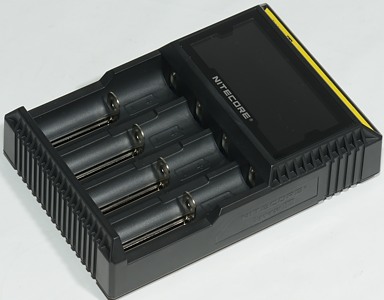

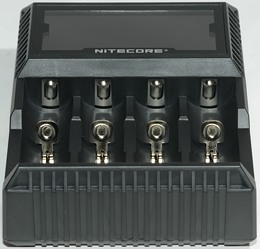
This charger is based on a i4 with a display added and a couple of improvements. This makes it possible to charger more battery types than the i4 and also follow the charging in more details.
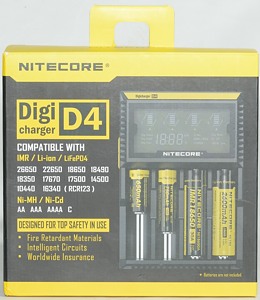

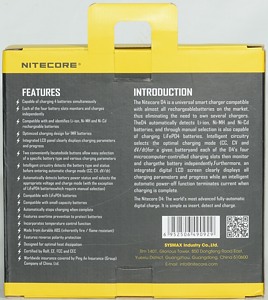

The cardboard box lists lot of specifications, battery types and features.
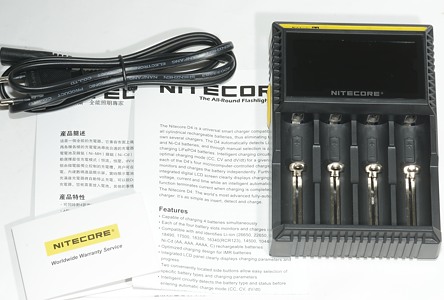
The box contains the charger, a mains cable, a manual and a warranty card.
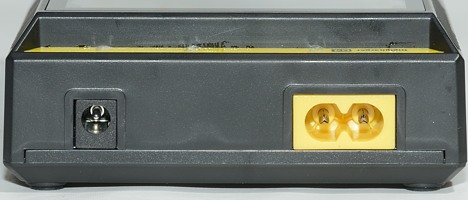
The charger has two power connectors, one for mains input (100-240VAC 50/60Hz) and one for 12 VDC input.
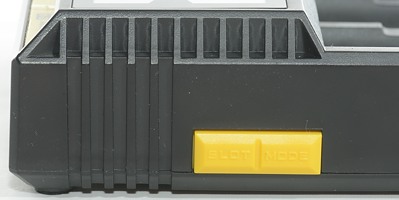
The charger has two switches combined in one rocker:
SLOT: Used to select slot, holding it down will turn the display off or on without affecting the charging.
MODE: Used to change value displayed (Volt, mA, time), with longer presseds it can also be used to select low charge current and LiFePO4.
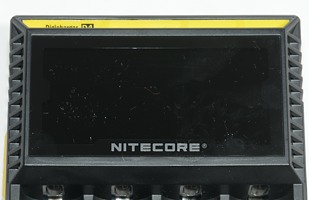
The charger has a large display with background light.
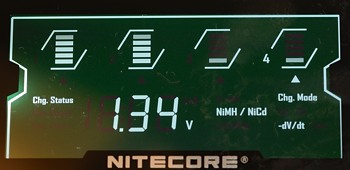
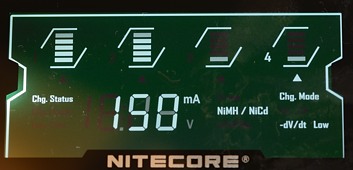
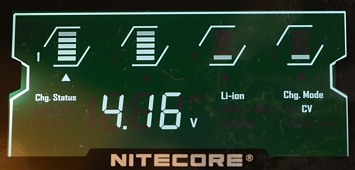
The display looks good, but is a bit on the technical side. The upper part of the display shows the four charge bays, the lower part shows the status for one bay. The actual bay is selected with the SLOT switch.
The numbers will automatic switch between volt, mA and time, but can also be switched with quick presses on the MODE switch.
Holding the MODE switch for about one second will select "Low", i.e. 300mA charge current. Average charge current may be halved due to time sharing (Display will show 150mA in that case).
Holding the MODE switch for about two seconds will select "LiFePO4", i.e. 3.6 volt charging. Releasing the button and pressing again will select low current for LiFePO4.
There is a small "Chg. Finished" text on the lower display, this is used on finished channels. When all channels with batteries in are charged the charger will show "ALL" in the numeric display.
Displayed charger currents (They will slowly reduce when entering CV phase of a LiIon charge):
750mA: The charge circuit is only charging one battery.
375mA: The charge circuit time sharing between two batteries.
300mA: The charge circuit is in low current mode and only charging one battery.
150mA: The charge circuit is in low current mode and time sharing between two batteries.
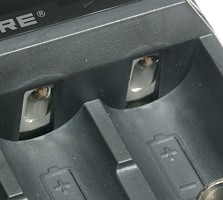

The slots uses the usual construction and works well. They can handle batteries from 30mm to 69.3 mm long.
That excludes some of the longest batteries, especially some protected 26650.



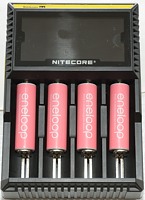

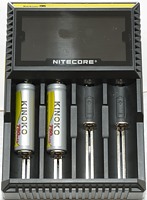
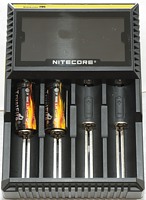
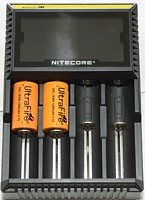
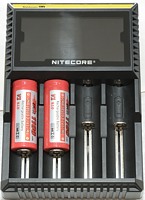
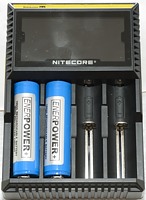
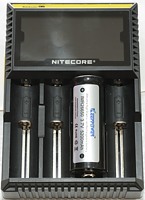
The charger can handle 69.3 mm long batteries, inclusive flat top cells.
With 26xxx batteries there is only space for one battery.
With C batteries there is a problem with the small button top sliding off the plus pole on the charger.
A look inside the charger
Nitecore asked me to show the inside of the charger:

Four screws has to be removed to get into the charger.
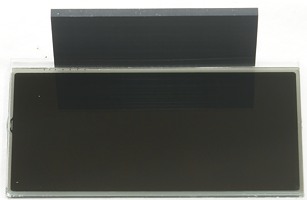
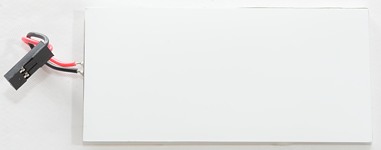
The display uses a long zebra connector between it and the circuit board. The background light is a separate module.
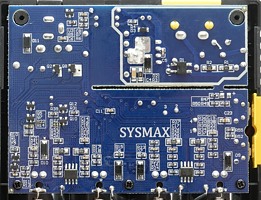
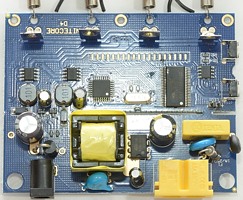
On the circuit board can be seen:
A long isolation slot between the mains and the rest of the circuit.
Mains input has a fuse, NTC, a noise suppression capacitor and uses a IC for controlling the mains switcher.
Safety capacitor between mains and low volt side.
The two inductors marked 101 is for the two charge channels.
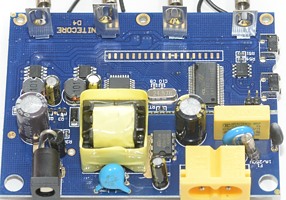
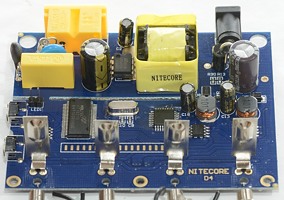
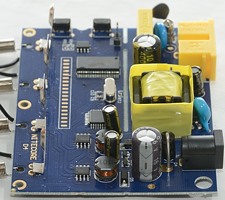
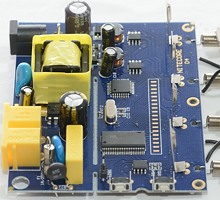
Measurements
- Discharges LiIon with 0.8mA and NiMH with 0.16mA when not connected to power
- With a empty battery the charger will try to activate it, then show "Err" after a short time.
- At 0.8 volt the charger will assume NiMH and start charging.
- The charger will assume NiMH below 1.8 volt and LiIon above 1.8 volt.
- Will not restart if battery voltage drops.
- Charges with 0.2mA when LiIon battery is full.
- Voltmeter readout freezes when charging is finished
- Voltmeter is within 0.03 volt.
- Voltmeter has a max. readout of 4.20 volt.
- Current readout is not average charge current.
- Charge will restart charging after power loss or battery insertion.
- The button marked "SLOT" will change the display to the next slot with each press.
- The button marked "MODE" will change value displayed (Volt, mA, time), with longer presseds it can also be used to select low charge current and LiFePO4.
- C cells has a tendency to slide off the plus pole, i.e. some aluminium foil must used to get a stable connection. It is difficult to fit more than one C battery at a time.
- The charger has two charge circuit, one is serving slot #1 and #4, the other is serving slot #2 and #3 using time sharing.
- Low current selection is seperate for each slot and is independend of time sharing.
- When a charge circuit has batteries in both slots, in will use 7.5 second on each in a 15 second cycle.
- When a slot is finished, the current is not redirected to the other slot in the group.
LiIon charging
%20%231.png)
The charger does a simulated CC/CV charger with a 50mA termination, this is fine.
I do not know where the jump in current comes from, it does make the charging a bit slower, but does not affect the quality of the charging.
%20%232.png)
%20%233.png)
%20%234.png)
The other channels has the same CC/CV curve.
%20%231.png)
%20%231.png)
There is not much variation in charge time for the different capacities.
%20%231.png)
Selecting low current mode will reduce the peak charge current to 300mA, it does not change the terminaiton current.
%20%231.png)
The old 16340 cell, does also have a jump in current, here the reason is obvious: The voltage gets too high and the charger has to do a fast adjustment in the current.
%20%231.png)
The 18350 at 750mA works fine
%20%231.png)
The 14500 at 300mA is also fine.
.png)
With more batteries in the charger it will alternate between (time share) the slots and the effective charge rate is halved. Due to the low charge rate, there is not that much heat.
.png)
When using the DC input the charger needs slightly above 0.8A. Notice the temperature is about the same with DC supply as with mains supply, i.e. the build in mains supply do not generate much heat.
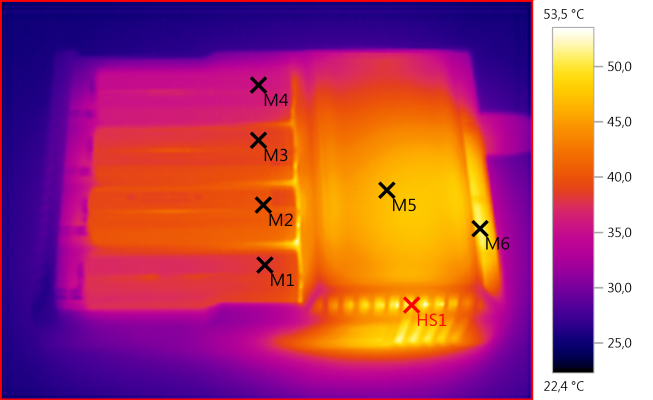
M1: 38,4°C, M2: 40,2°C, M3: 38,6°C, M4: 35,6°C, M5: 46,9°C, M6: 51,2°C, HS1: 53,5°C
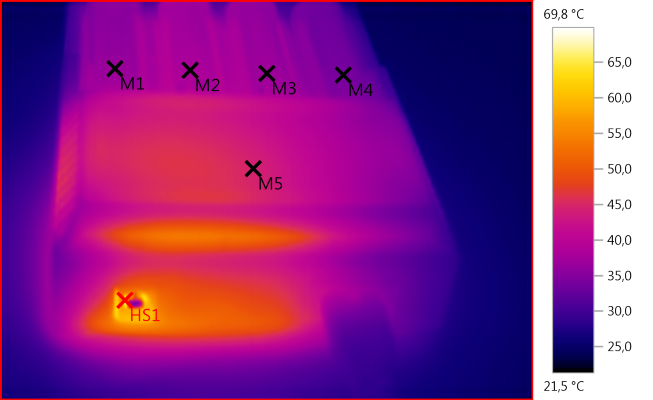
M1: 36,8°C, M2: 38,3°C, M3: 37,2°C, M4: 34,1°C, M5: 44,4°C, HS1: 69,8°C
Inside the box it get fairly hot and this makes the DC connector hot.
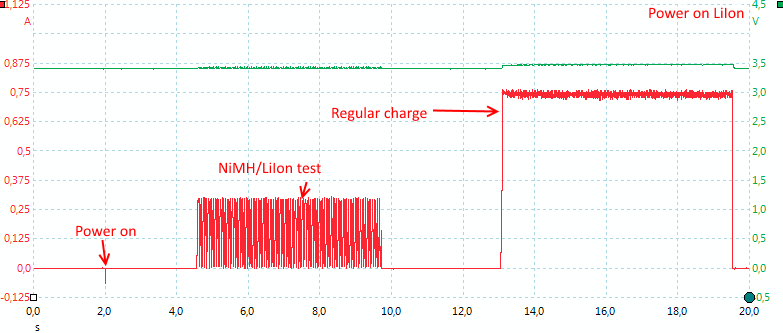
The charger need some time to start a charge, it first does a test, probably to reset any LiIon protection and detect LiIon/NiMH.
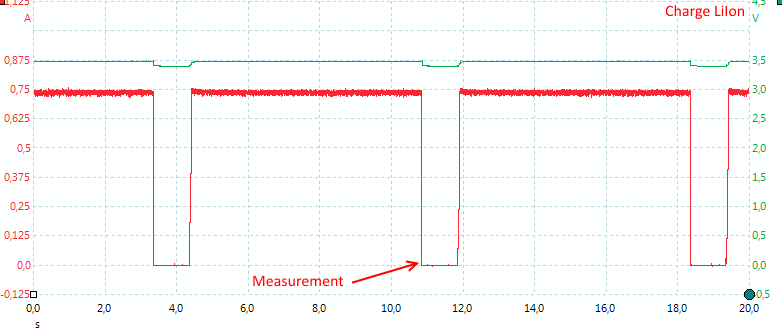
The charger measures voltage with current off.
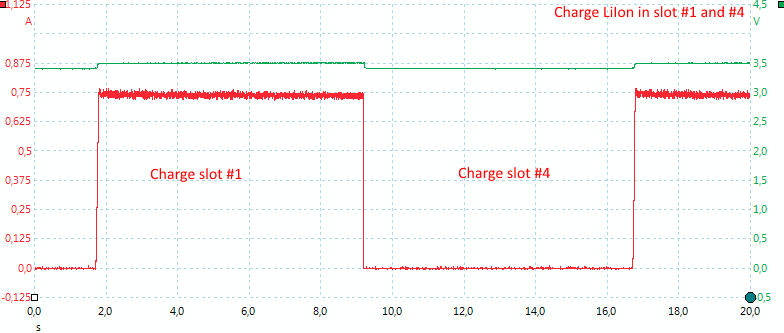
When a charge channel charges two batteries it will use 50% of the time on each slot.
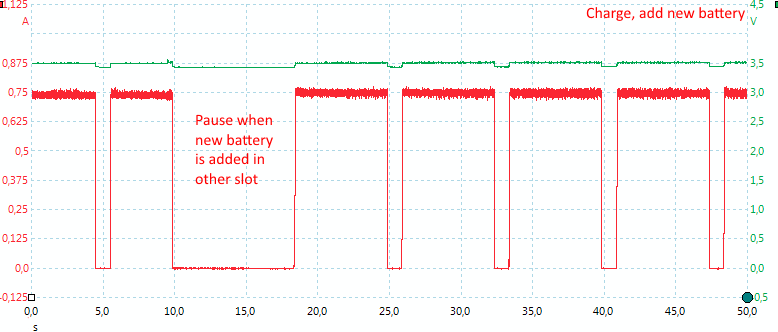
When a battery is put into a slot, all slots will pause for a few seconds.
IFR (LiFePO4) charging
Holding the MODE button pressed for about 2 second will switch to LiFePO4 mode.
.png)
The charge voltage is too high, but this is not as critical with LiFePO4 as with ordinary LiIon batteries. The charge is a CC/CV charge with termination at about 50mA and no trickle charge.
The voltage is no accident, the charger is marked 3.7 volt for LiFePO4 charge.
NiMH charging
%20%231.png)
The NiMH charging stops on -dv/dt and do not use trickle charge.
%20%232.png)
%20%233.png)
%20%234.png)
All channels works the same.
%20%231.png)
The eneloop XX needs a bit more time.
%20%231.png)
%20%231.png)
I did the AAA cell at the low setting and it also terminated on -dv/dt.
%20%231.png)
With -dv/dt termination it takes some time to detect a full battery, but this charger is very slow at it with 28 minutes.
.png)
With four cells, the charge current is halved.
.png)
Charging NiMH uses less current on the DC input, compared to LiIon cells, only about 0.5A.
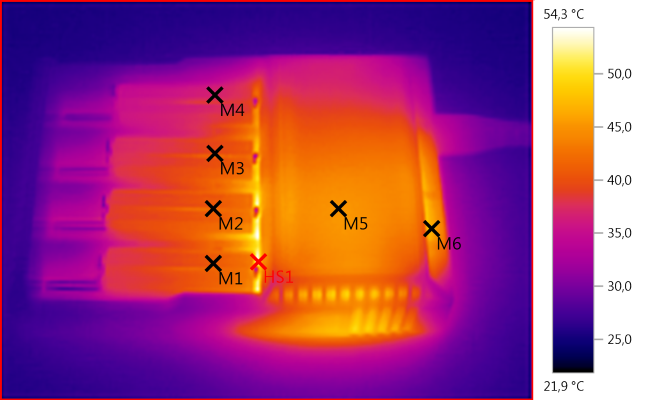
M1: 40,8°C, M2: 42,1°C, M3: 39,8°C, M4: 36,8°C, M5: 45,1°C, M6: 46,5°C, HS1: 54,3°C

The charger also uses a lower test current here, before it switches to the full charge current.
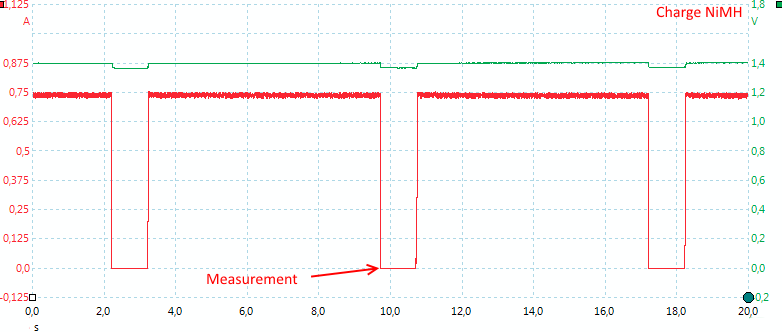
Voltage is measured with current turned off.
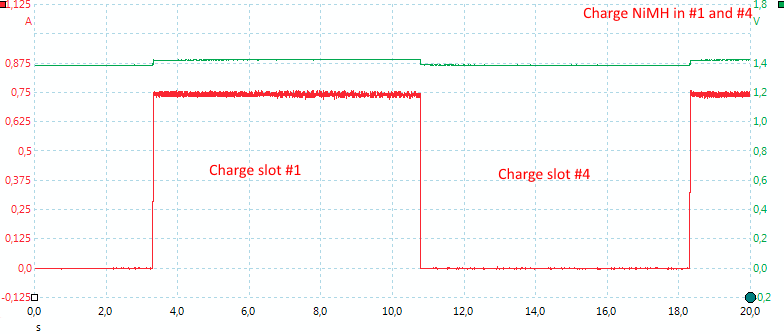
When a charge channel charges two batteries it will use 50% of the time on each slot.
LiIon+NiMH charging
.png)
With one NiMH battery and 3 LiIon batteries, the charger has no problem with charging the NiMH (Temps sensor is on LiIon battery).
.png)
With one LiIon and 3 NiMH batteries, the LiIon is also charged fine (Temp sensor is on NiMH battery).
Testing the mains input with 2500 volt and 5000 volt between mains and low volt side, did not show any safety problems.
Conclusion
The charger does a good charging on both LiIon, LiFePO4 and NiMH.
The charge can be used for 26650 cells, but are not ideal for it, I would have liked the slots 2 mm longer, some protected 26650 are rather long.
I like the display, but it is a bit technical to look at and it only shows data for one channel at a time.
The D4 is a good universal charger and the low mode makes it better for small cells than the i4. Charging two batteries is reasonable fast, but four batteries requires some patience.
Notes
The grouping of slots is not the same as in the i4 series chargers.
The charger was supplied by a Nitecore for review.
Review of old i4 (V2)
Here is an explanation on how I did the above charge curves: How do I test a charger




































%20%231.png)
%20%232.png)
%20%233.png)
%20%234.png)
%20%231.png)
%20%231.png)
%20%231.png)
%20%231.png)
%20%231.png)
%20%231.png)
.png)
.png)






.png)
%20%231.png)
%20%232.png)
%20%233.png)
%20%234.png)
%20%231.png)
%20%231.png)
%20%231.png)
%20%231.png)
.png)
.png)




.png)
.png)